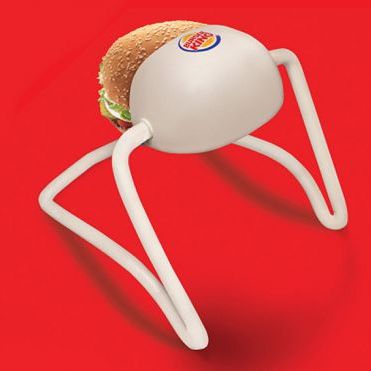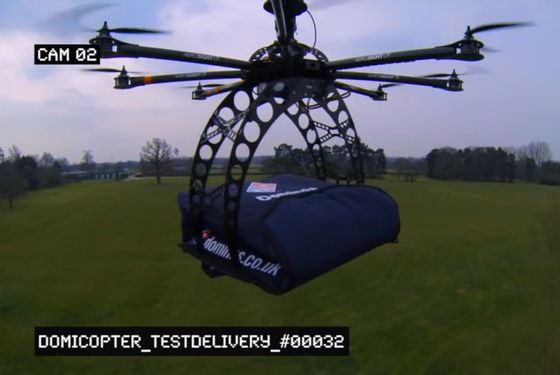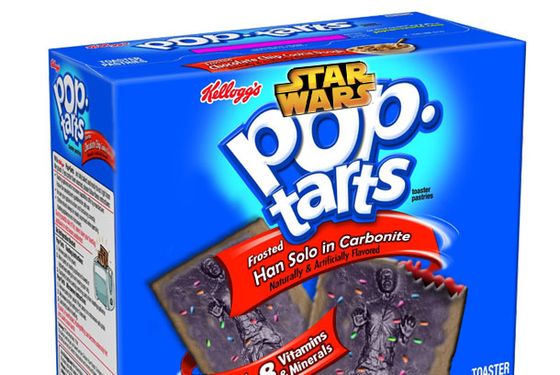
Chances are good that in the last couple of years, you’ve helped a junk-food maker or fast-food company advertise itself. That’s because big food corporations are figuring out that they can maximize their social-media footprint if they stop marketing their actual products and instead roll out fake, attention-grabbing creations they have no intention of ever making. It’s not at all surprising that companies are trying to use viral content to market their products — but it is a little bit shocking how readily consumers go for the bait.
The trend dates back at least to 2008, when early adopter Burger King announced the launch of a Whopper-scented cologne — news that quickly spread to every corner of the Internet. The cologne was real (if limited in quantity), but the launch was just a stunt. Not that that stopped it from being an enormous viral hit on social media.
In the five years since, the strategy has steadily gained momentum — particularly in the past year. Last week, conveyor-belt sushi chain Yo! Sushi unveiled its latest innovation, a remote-controlled drone quadcopter that may or may not eventually be used to levitate rice burgers to seated customers. And that wasn’t even the first delivery-drone announcement this month: Two weeks earlier, Domino’s unleashed a promo video for its Blackwater-themed “DomiCopter,” a new, yes, delivery drone, which — were it real — would whisk hot pies through the sky right to your front door. Meanwhile, Burger King was back to its old tricks with the announcement of an inventive, hands-free Whopper holder in honor of a franchise anniversary in Puerto Rico. It was only after the Internet’s arteries began clogging with legions of blog posts about the mod-looking feeding trough (the accompanying video got a half-million views on YouTube) did the chain announce there was no such thing as a hands-free Whopper holder.

Rainbow Oreos, which appeared online last summer as a tribute to marriage equality, followed the same basic trajectory: The product went viral at lightning speed, and then Nabisco revealed they had no intentions of actually making the colorful cookie.
In each case, these attention-grabbing stunts prompted the kind of OMG, have you seen this? reaction that seems to compel people to share links online. The appeal is hardly lost on reporters and editors (the staff of Grub Street included), who — smelling a potential hit — tend to cover the news announcement. Those stories then get passed around on social media, and the brand name is splashed all over Twitter feeds and Facebook walls around the world. From a marketer’s perspective, it’s mission accomplished.
Beyond that, fake stuff is just easier. The company gets the PR boost without ever facing the usual array of headaches that accompany the roll-out of real-life products. It’s difficult to enforce false-advertising regulation against something that doesn’t exist. But in the real world, Kellogg’s can be sued for claiming Cocoa Krispies strengthen the immune system or saying that Frosted Mini-Wheats make kids smarter.
As the art of the fake-product launch has matured, some companies have found that the viral benefits are just as great when the creative genius who makes up the product is just some random person on the Internet. Anyone with rudimentary Photoshop skills can put together a somewhat believable depiction of Han Solo Pop-Tarts. If an unofficial product doesn’t gel with the brand image, the company can issue a cease-and-desist under the guise of protecting their trademark. If it does, they issue a statement that says they had nothing to do with it and watch as people continue to share the faux product while wishing it existed — or, in the case of a Pop-Tart-flavored vodka, actually believing it did.
Even a stalwart consumer-goods company like Procter & Gamble will play ball. P&G; must have been unsettled a few years ago when it learned that some digital smart aleck had mocked up a fake Doritos-flavored edition of Scope mouthwash. But by 2013, the company was ripping off the concept, announcing the “launch” of a bacon-flavored version of the mouthwash. The product had a YouTube ad, a slogan (“For breath that sizzles”), and got ink from national food outlets like Bon Appétit. When everyone found out it was fake, that just created an additional round of buzz.

This is marketing as performance art, and it’s working.
Gawker recently pointed out that marketers are constantly looking for “the ad that doesn’t feel like an ad.” Here we have it. People who might otherwise ignore traditional advertising see these products and like sharing the news. Among all the talk of sponsored content appearing in traditional media outlets, this is advertising that is actual, non-sponsored content. A company just puts it out there, and consumers do all the heavy lifting: “You have to entrust 23-year-olds to protect or amplify the brand without the classic structure that organizations use to make decisions,” Taco Bell chief executive Greg Creed said a few weeks ago, which is a message more ominous than it seems. “That’s why understanding the brand essence is so important, because they can respond in the voice of the brand.”
Fake or not, eau de pepperoni, hamburger contraptions, and the intangible prospect of drone deliveries present a way for consumers to talk about a brand or fast-food chain without talking about fat and salt content and high-fructose corn syrup — at least for a few days.




